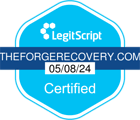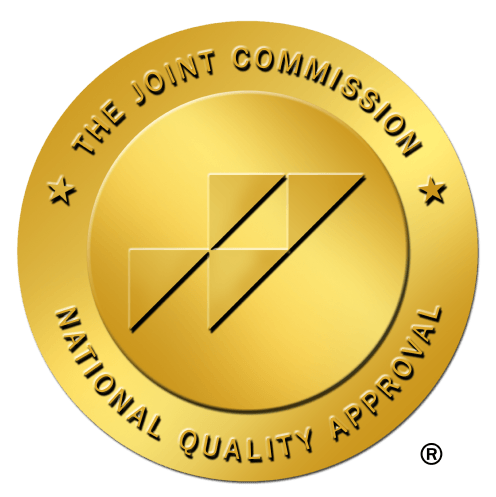Creating a Personalized Treatment Plan for Depression


Learn how to create a personalized treatment plan for depression with practical steps and examples. Explore the best treatment plan for depression example.
Depression is a complex and deeply personal condition, affecting individuals in unique ways. It can disrupt your daily life, relationships, and sense of purpose, making it essential to find an approach that addresses your specific needs. Recovery is not a one-size-fits-all journey—it requires understanding, compassion, and strategies that work for you.
A tailored treatment plan ensures that the focus remains on what truly matters: your well-being and long-term recovery. At The Forge Recovery Center, we specialize in helping individuals overcome mental health challenges with personalized care. In this article, we will explore a practical treatment plan for depression example and essential steps to guide you or your loved one toward healing.

Comprehensive Assessment
A comprehensive assessment forms the foundation of an effective treatment plan for depression. This critical first step allows healthcare providers to understand the full scope of the individual's mental health challenges, ensuring that the treatment is personalized and targeted.
Evaluating Mental Health History
Understanding an individual’s mental health history is vital in identifying patterns, triggers, and previous treatment outcomes. This includes:
Reviewing past diagnoses: Identifying any history of depression, anxiety, or other mental health conditions.
Exploring treatment responses: Understanding what therapies or medications have been tried and how effective they were.
Considering family history: Assessing genetic predispositions to mental health conditions.
Identifying Current Symptoms and Contributing Factors
Depression presents differently for everyone. Conducting a thorough evaluation of current symptoms helps to pinpoint the severity and nature of the condition. Key areas to assess include:
Physical and emotional symptoms: Persistent sadness, loss of interest, fatigue, and changes in appetite or sleep.
Lifestyle and environmental factors: Work stress, relationship challenges, and major life transitions.
Underlying medical conditions: Identifying physical health issues that could contribute to or mimic depression, such as thyroid disorders or chronic pain.
Using Standardized Tools and Clinical Interviews
To gather detailed and reliable information, mental health professionals often use a combination of standardized tools and clinical interviews. Common approaches include:
Questionnaires and scales: Tools like the PHQ-9 (Patient Health Questionnaire) or Beck Depression Inventory measure the severity of depressive symptoms.
Clinical interviews: Open-ended conversations allow for a deeper understanding of the individual’s experiences and feelings.
Functional assessments: Evaluating how depression affects daily activities, such as work, relationships, and self-care.
This comprehensive approach ensures that the treatment plan addresses not just the symptoms but also the root causes of depression. By taking the time to fully understand the individual, healthcare providers can lay the groundwork for a plan that is both effective and compassionate.
Setting Specific Goals
Setting clear, measurable, and achievable goals is a crucial step in creating an effective treatment plan for depression. Goals act as a roadmap for recovery, helping you and your care team focus on tangible outcomes and track progress over time. Collaboratively establishing these goals ensures they align with your personal values, needs, and circumstances.
The Importance of Collaborative Goal-Setting
Goals are most effective when they are created in partnership with your healthcare provider. This collaboration allows for:
Personalized objectives: Goals that resonate with your unique challenges and aspirations.
Empowerment: Actively participating in your treatment fosters a sense of control and commitment to the recovery process.
Adaptability: Goals can evolve as you make progress, keeping the treatment plan relevant and motivating.
Characteristics of Effective Goals
Effective goals are SMART:
Specific: Clearly define what you aim to achieve.
Measurable: Include criteria to track progress.
Achievable: Ensure the goals are realistic and within reach.
Relevant: Align them with your broader recovery objectives.
Time-bound: Set a timeframe for completion to maintain focus and momentum.
Examples of Treatment Goals
Here are some practical examples of treatment goals that may be included in a depression recovery plan:
Reducing Depressive Symptoms
Example: Decrease the frequency of feelings of sadness or hopelessness by 50% within three months.
Approach: Engage in weekly therapy sessions, practice daily journaling, and incorporate prescribed medication.
Improving Daily Functioning
Example: Return to work part-time within six weeks or increase participation in household responsibilities.
Approach: Develop a structured daily routine and address barriers through counseling.
Enhancing Coping Skills
Example: Learn and apply three stress-management techniques within the first month.
Approach: Attend mindfulness training, practice breathing exercises, and participate in group therapy.
By setting these specific and actionable goals, your treatment plan becomes a dynamic tool for recovery. As you achieve each milestone, it reinforces your progress and builds confidence in overcoming depression.
Are You Struggling with Mental Health or Addiction?
We Can Help. Call Us Now!
CALL: 877-839-1772
Selecting Appropriate Interventions

Choosing the right interventions is a cornerstone of any effective treatment plan for depression. Each individual’s needs and circumstances differ, so a combination of therapies, medications, and lifestyle adjustments may be required. A well-rounded approach ensures that every aspect of the condition is addressed, creating a comprehensive and personalized solution. Here’s how a treatment plan for depression example might include a variety of interventions.
Psychotherapy Options
Therapy is often the first line of treatment for depression, providing tools and strategies to address emotional and psychological challenges.
Cognitive Behavioral Therapy (CBT):
CBT focuses on identifying and altering negative thought patterns that perpetuate depression. For instance, a therapist may work with you to challenge beliefs like "I’m a failure" and replace them with constructive and realistic perspectives.Interpersonal Therapy (IPT):
IPT targets interpersonal relationships and social functioning. If relationship conflicts or grief are contributing to your depression, this therapy helps improve communication and resolve conflicts.
These therapies can be tailored to your unique situation, ensuring that the emotional root causes of depression are effectively addressed.
Pharmacotherapy
For some individuals, antidepressant medications play a vital role in managing symptoms. A psychiatrist may recommend medications based on:
Symptom severity: Determining if symptoms are mild, moderate, or severe.
Medical history: Considering past medication responses and possible side effects.
Combination with therapy: Enhancing the effectiveness of therapy sessions.
For example, selective serotonin reuptake inhibitors (SSRIs) like sertraline may be prescribed to help regulate mood. Medication is typically monitored and adjusted to ensure optimal results within the treatment plan.
Lifestyle Modifications
Small but consistent changes in daily habits can have a profound impact on mental health. Incorporating these into a treatment plan for depression example creates a holistic approach to recovery:
Physical Activity: Regular exercise boosts endorphins and improves overall mood. Even 30 minutes of walking a few times a week can make a difference.
Nutrition: A balanced diet rich in omega-3 fatty acids, whole grains, and vegetables supports brain health.
Sleep Hygiene: Establishing a regular sleep schedule and minimizing disruptions enhances emotional resilience.
Alternative Therapies

Complementary therapies can provide additional support to traditional methods, offering relief and enhancing overall well-being.
Mindfulness Meditation: Practicing mindfulness reduces stress and increases emotional awareness. Guided meditation or mindfulness-based stress reduction (MBSR) programs can be integrated into your routine.
Light Therapy: For individuals with seasonal affective disorder (SAD), exposure to a light therapy box can regulate mood by mimicking natural sunlight.
Each of these interventions can be combined and customized to suit your specific needs, ensuring your treatment plan is as effective and supportive as possible. By addressing depression from multiple angles, a comprehensive and individualized plan empowers you to take meaningful steps toward recovery.
Depression Controlling Your Life? Let Us Help You Take It Back
A personalized approach is key to effectively treating depression, as every individual's journey is unique. By tailoring a plan to your specific needs, you can address the root causes of your struggles and take meaningful steps toward recovery. At The Forge Recovery Center, we specialize in helping individuals like you regain control and build a life free from mental health challenges. Your active participation in creating and following a treatment plan is essential for lasting progress. If you're ready to start your journey, we're here to provide the support and resources you need to recover and thrive.
Are You Struggling with Mental Health or Addiction?
We Can Help. Call Us Now!
CALL: 877-839-1772




